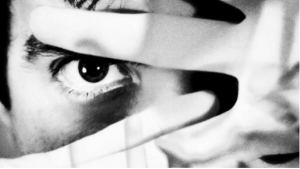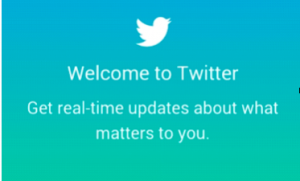Instead of Traditional Ads, Why Not a Video Game?
- At December 13, 2016
- By rbadmin
- In Blog
 0
0
Tintri came up with the brilliant idea to revolutionize its marketing with a video game.
It’s a medium-sized company based in the Bay Area, and they’ve done most of their marketing on their website and at annual trade shows. It worked well enough, but making a big splash at trade shows is extraordinarily difficult. The competition is staggering, and the routine is always the same. A few people at a time will hang out in the booth for a while and have a couple of snacks, then move on to the next booth and forget all about Tintri.
They wanted to convince potential customers to stay longer, so they hired us here at reddbug to build a video game that’s so compelling that people would not want to leave.
We did it inside six months, but it wasn’t easy. Building a video game from scratch—including the concept and story—is a daunting experience, especially if you want to make sure the game is not only entertaining but addicting. We also had to ensure players wouldn’t feel like they’re being manipulated with an interactive ad.
And the game had to be relevant. It couldn’t just be about anything. Tintri builds sophisticated storage devices. Their enterprise cloud platform combines a web service architecture like Amazon’s with virtual machines and containers. It sounds complicated, but Tintri makes everything easy.
So we built all that in. The game consists of multiple levels and rooms. Each room represents another step in provisioning a server in such a way that’s directly related to Tintri’s product. Not only is the game entertaining, it educates players about Tintri while they’re playing it.
We also had to make sure the game didn’t infringe upon any other game maker’s intellectual property or trademark. It had to be original.
And we were under a time crunch. It’s easy enough to get a mobile app or game approved for distribution in the Android store, but it’s a different story with Apple. Apple has standards. Apple is picky. Apple likes to say no.
But they didn’t say no to reddbug and Tintri. It’s a good thing, too, because if the game wasn’t finished on time, if it was too buggy, or if the Apple store didn’t think it was good enough, all that time and money and effort would have been wasted.
It wasn’t wasted. The game was a smashing success. It really is fun and addictive, and it really does educate players about Tintri. The company even put up big TVs in their trade show booth displaying the leaderboards. It drew massive crowds. Thousands of people downloaded it onto their mobile devices and played it. They competed against each other. They talked about it. They brought more and more people into the booth who lingered and immersed themselves in Tintri’s world for a long time.
It was a risky move, but Tintri more than made its money back on the investment.
The game is still available in the app store. You can download and play it yourself for free. It’s called Storage Tintris.
And if you’d like to hire us to create an app or game for your company, contact us.
Who are Generation Z?
- At November 05, 2016
- By rbadmin
- In Blog
 0
0
 The next generation is already rising.
The next generation is already rising.
It’s hard to believe, but Generation X, those of us who now range in age from our mid-30s to mid-50s and once derisively known as “slackers,” are almost firmly ensconced in middle age. Generation Y, or Millenials, are today’s young adults, and they’ve been studied and written about almost as much as our aging Baby Boomers, most famously by William Strauss and Neil Howe, who coined their name in the book, Millennials Rising.
Generation Z, though, has been a mystery to almost everyone except their parents and teachers—until now.
In September and October of this year, Adobe surveyed more than 1,000 Generation Z students between the ages of 11-17, and more than 400 teachers with Generation Z kids as their students. The results are fascinating.
You can read the entire study yourself—the team here at reddbug helped develop the infographic and microsite—but here are the key insights.
Insight 1: This first one isn’t surprising—both students and teachers believe that Generation Z’s defining characteristic is that they’ve all grown up in the age of technology. These kids have never known a world without high-speed Internet, smartphones, social media and on-demand streaming video.
They think of regular old email the way Xers used to look at black-and-white television. It gets the job done, they suppose, but it’s not particularly interesting.
The upside is they think they’re more creative than older generations and have more passion “for making things better and smarter.” The downside may be that technology is so integral to their experience that, as one teacher said, “it can become a hindrance for them to think without it.”
Insight 2: They also say they’re excited and nervous about the future, and that they aren’t yet prepared for the “real world.” One student put it this way: “I feel unprepared due to a lack of jobs, the high cost of education, not learning important life skills after high school.”
Of course, none of us are truly ready for the real world until we’ve spent some time there. None of us are ready to be married, either, until we are, and we’re especially not ready to have our own children before they’re born. We figure it out, though—at least most of us do—and today’s kids will too.
Almost half of the students surveyed think that what they learn outside of school will be more important to their careers than what they learn at school. That will turn out to be true, too, for almost all of them, with the possible exceptions of rocket scientists and brain surgeons.
Insight 3: The overwhelming majority of both students and teachers think kids learn more by doing things and creating things than reading about them or hearing about them, and again, they’re right.
Think about it this way: you could read every book ever written about flying helicopters, but you’ll still probably crash the first time you fly one if there isn’t an instructor there helping you out.
Insight 4: Both students and teachers think creativity will be a crucial workforce skill in the future, and again, they are correct.
These kids have never known anything but the cutting edge, sure, but technology is still changing the world at a breathtaking pace, and unless a giant asteroid slams into the planet, that’s not going to change. The Generation Z cohort just isn’t old enough yet to experience the shock of the new. The tools they’ll have when they’re in the 40s, and the skills they’ll need to use them, haven’t even been imagined yet, let alone invented.
Much of what gets invented in the future—and they seem to know this instinctively—won’t just be used by them, it will be invented by them. We probably won’t have hover cars or jet packs when we older folks reach retirement age, but we’ll be able to thank Generation Z for most of the things that we will have.
Are You Burned Out?
- At October 08, 2016
- By rbadmin
- In Blog
 0
0
Full-blown occupational burnout is one of the most devastating things that can happen to a person professionally.
It can strike anyone, but it’s most crushing when it happens after a long climb to a dream job. There’s nothing like the feeling of work bliss turning to ashes except for divorce.
Dr. Dina Glouberman wrote the book on the subject, called The Joy of Burnout: How Burning Out Unlocks the Way to a Better, Brighter Future. The title may seem ridiculous, but it’s not, as anyone who has burned out and fully recovered knows.
“Burnout feels like the end of the world,” she writes in Chapter One. “It’s not. It’s the beginning of a new one.”
Most professionals work for roughly 40 years, from their mid-20s to their mid-60s. Some work even longer, well into their 80s. Virtually none stay in one place, in one job, or on a single track for that entire duration. Otherwise, the mid-life crisis wouldn’t be so distressingly common.
What does slamming into the wall feel like? “Your heart has gone out of something,” Glouberman writes, “but fear, often of the loss of your sense of identity, drives you to work even harder or give even more.”
If you’re on the road to burning out but aren’t there yet, you can slow down and take more time for yourself. Stop working overtime on weekends if you don’t have to. Do what you can to reduce the amount of stress in your life. Get out more and remember that there is more to life than your job.
If you’ve reached the end of the road, though, if you’re truly finished with a long chapter in your life, no extra down time—not even a long sabbatical—is going to work, and you’ll find yourself having to choose from one of three options.
Start a whole new career. This one is the hardest and by far the most intimidating. There are no shortcuts, either. The key here is to leverage the skills you learned from your last career into your next one.
This is relatively straightforward if, say, you’re making the leap from journalism to marketing or from the military to law enforcement. It’s tougher if you want to hop from dentistry to real estate development. Still, the skills and experience you develop in one career will almost certainly apply in another one.
You can always start over from scratch. Lots of corporate managers pull the pin and move to the countryside to open a bed-and-breakfast. There are plenty law and medical students in their 40s and even 50s. The vast majority of these people are happier after they make the transition, though many go through hell first to get there.
Make changes to your career. Sometimes, you just need a new job that’s only a little bit different from your previous job. Maybe you need more responsibility, or perhaps you’re willing to take a pay cut to reduce your responsibilities and therefore your stress level. Jumping from writing to editing might do the trick, or from graphic design to management.
Nurture a new attitude toward your career. One of the characteristics of burnout is disengagement and a complete loss of interest in whatever attracted you to the job in the first place. It might help to remind yourself why you chose your career, but perhaps you’re no longer the same person you used to be. Either way, there is almost certainly some value in what you do or you wouldn’t have chosen to do it, and you may simply need to find something new to appreciate.
Some of us just need to overhaul our work-life balance. There is more to life than work, after all. None of us are here solely to produce. We are also children, siblings, parents and friends. If work is the only thing that matters, why would anyone ever want to retire or go on vacation?
Whether you just need a break or a whole new direction, remember that burnout isn’t a disease. It’s a symptom caused by something that’s wrong in your life, your mind’s way of saying it’s time to make some small or large changes.
Once you’ve implemented those changes, whether it takes a couple of weeks or a couple of years, you’ll feel refreshed and invigorated, like yourself again, only better.
Are You Suffering From Imposter Syndrome?
- At October 04, 2016
- By rbadmin
- In Blog
 0
0
“The trouble with the world is that the stupid are cocksure and the intelligent are full of doubt.” Bertrand Russell
Do you feel in over your head? Is fear of failure making you weak in the knees? Are you afraid of being “found out,” that the recent success you’ve enjoyed is based purely on happenstance and that there’s no chance you’ll win the luck lottery twice? Do you dread that any day now a man will show up at your front door and, staring at a clipboard, inform you that there’s been a mistake, that your professional credentials you never deserved in the first place are finally being revoked?
If that’s you, you probably have Imposter Syndrome, a condition identified by psychologists Pauline Clance and Suzanne Imes in 1978. High achieving individuals are especially prone to it. “The more people think you’re really great,” prize-winning author David Foster Wallace said in the outstanding film The End of the Tour, “the bigger the fear of being a fraud is.”
It’s not quote a mental disorder (it isn’t serious and it requires no therapy), but it affects as many as 70 percent of us at one point or another, and it can lead to anxiety and depression if we don’t come to grips with it.
The good news is that, contrary to how it makes you feel, imposter syndrome means you’re on the way up. You’re either embarking on an exciting new career path or you’ve recently been promoted. You’re outside your comfort zone, but you’re on your way to creating a new one.
Think about lobsters. As these creatures grow, they burst their shells and are temporarily vulnerable and exposed. Over time, though, they create new shells and feel safe and protected again. Their growth is always inwardly driven, rendering their former shells too small to contain them.
That’s you. If you have imposter syndrome, you’re probably growing. (No, you are not getting fatter.) You’re either growing taller or more expansive. Your resume, no doubt, looks better than it did even a short time ago. And the longer you stay where you are, the more comfortable you’ll feel in your new skin until you grow and expand again and begin the process anew.
Bear in mind that the feeling is most likely temporary, though it isn’t likely to switch off all at once. Rather, it will gradually diminish in stages.
It also helps to remember that the problem is almost universal.
“I have written eleven books,” Maya Angelou once said, “but each time I think, ‘uh oh, they’re going to find out now. I’ve run a game on everybody, and they’re going to find me out.’” “I still think people will find out that I’m really not very talented,” actress Michelle Pfeifer said. “I’m really not very good. It’s all been a big sham.” “The first problem of any kind of even limited success,” author Neil Gaiman wrote, “is the unshakable conviction that you are getting away with something, and that any moment now they will discover you. It’…something my wife Amanda christened the Fraud Police.” Supreme Court Justice Sonia Sotomayor has said she feels the same way sometimes.
If those four people—and those are just four famous examples—are susceptible to repeated bouts of Imposter Syndrome despite being so spectacularly accomplished, the feeling clearly has no bearing on reality whatsoever. It’s just a feeling. An illusion. It can be safely dismissed. You can tell yourself that the feeling of being a fraud is itself fraudulent.
You know who never suffers from imposter syndrome? Those who don’t care. People who aren’t ambitious, who refuse to grow, who are content to coast through life without stretching themselves or trying anything new.
We all feel like we don’t know what we’re doing sometimes, but there will always be someone who feels this more intensely than we do. (Imagine what it must feel like to be inaugurated as President of the United States. It’s not like the White House begins with a job training program.)
Unless you’re truly a fraud, though—unless you’re prepping for surgery without any medical training, or working as an undercover agent inside a terrorist organization—just give this feeling the middle finger and get on with your day. Each day you finish your work, even when you do it imperfectly, counts as one more piece of evidence that you are, in fact, precisely where you’re supposed to be.
With Twitter and Facebook, Timing is Everything
- At September 13, 2016
- By rbadmin
- In Blog
 0
0
The half-life of a Facebook post is 90 minutes. The half-life of a tweet is just 24.
This means that after less than half an hour, your tweet has already been seen and re-tweeted by half the people who will ever see or re-tweet it.
By the five-hour mark, a Facebook post will be 75 percent of the way to expired. A tweet passes that threshold in less than three hours.
This data comes from Benjamin Rey who drills down into the data and explains the methodology over at Wiselytics.
If you’re a social media marketer, then, timing is critical. The last thing you want to do is publish anything on your social media channels at midnight.
If you’re posting content on your own web site, it doesn’t really matter when it goes live unless you publish new content constantly. If you’re only publishing one to three times a week, you can drop a fresh blog post or article onto your page in the dead of night in the middle of a weekend. It’s fine.
Your tweets, though, and your Facebook posts need to debut at just the right time.
If you’re marketing locally or regionally, the best time is shortly after 9:00 am. The vast majority of your customers will be awake. Your post will be live and near enough the top of their social media feeds that it will be waiting for them and still visible whenever they decide to take a break from work and check out the Internet.
If you’re marketing nationwide, though, you might want to hold off on pressing the publish button until a bit later. You could wait until noon eastern time to ensure that customers on the west coast will be awake and caffeinated, but some of your customers on the east coast will head home and unwind offline before they see what you’ve published.
Best to aim for 10:30 am eastern. Your audience reach will be a little more balanced. You’ll only miss a small number of people on each coast—a few in the morning out west and a few in the evening back east.
If you post material to Facebook and Twitter all day, aiming for 10:30 am isn’t going to work. It’s never a good idea to dump a bunch of posts on your web site or social media channels all at once. So make a decision. If your customers will only see one posts all day, which would you like them to see? Post that one at 10:30 am eastern. Post half the others earlier if possible and the other half later.
Whatever you do, don’t tweet the same material more than once. Twitter expressly forbids posting “duplicate content over multiple accounts or multiple duplicate updates on one account.” If you do this, the service may flag your account as spam and will consider removing it.




